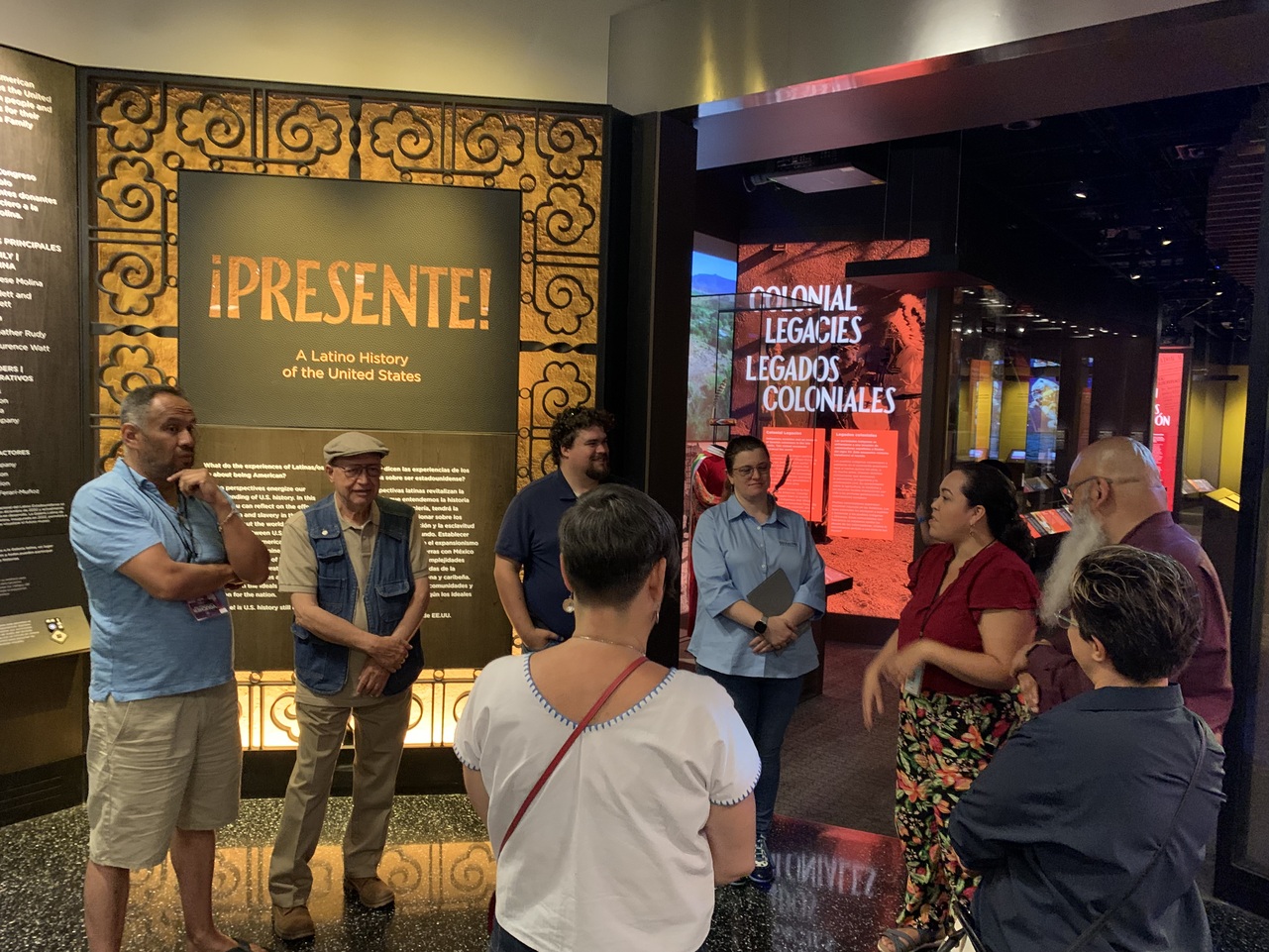
Is funding for the Smithsonian's National Museum of the American Latino at risk?
A dispute in Congress continues to delay the opening of a cultural space that has been planned for decades.
Amid what has been called an increasingly partisan culture war, a House committee voted to defund the Smithsonian's National Museum of the American Latino.
The clash of legislators in Congress, who have worked for several decades for the creation of a Latino museum in the U.S., arises from ideological differences in the definition of Latino history in the North American country.
In remarks published by NBCNews, Rep. Rosa DeLauro, D-Conn., said:
Defunding the museum now may mean that it may be delayed 10 more years.
Controversy with the Molina Family's Latino Gallery
Republicans recently pushed to defund the Smithsonian's upcoming National Museum of the American Latino and the Molina Family Latino Gallery, a small space inside the National Museum of American History used for temporary exhibits presenting Latino history.
According to statements by Rep. Mario Díaz-Balart, R-Fla., and Rep. Tony Gonzales, R-Texas, co-chairs of the Congressional Hispanic Conference, they were deeply disappointed and offended by the bilingual display titled “¡Presente! A Latino history of the United States.”
The art show, touted as “a preview” of the national Latino museum's potential when it opened last year at the Molina Family Latino Gallery, was criticized by conservative Latinos who accused the organizers of elevating left-wing ideologues, celebrating LGBTQ Latinos, and promote "the classic oppressor-oppressed agenda," further requesting that the museum be defunded.
The complaints, which reached the House Appropriations Committee last month, prompted a vote in which, by majority, the committee approved a Republican bill that included zeroing federal funds for the "planning, design, or construction” of the national Latino museum and the operation of the Molina Family Latino Gallery.
According to the Smithsonian's description, the current Molina gallery exhibit features important figures, such as indigenous freedom fighter Toypurina; Mexican-American civil rights leader César Chávez; Puerto Rican baseball star Roberto Clemente; Guatemalan labor unionist Luisa Moreno; Colombian-American drag queen José Sarria; and Cuban-American singer Celia Cruz.
Likewise, “¡Presente!” was developed based on conversations the curators had with museum visitors about what they don't know about Latino history.
“It was specifically designed to explore the rich history and culture, as well as the complexities and common threads, of U.S. Latino communities,” Jorge Zamanillo, director of the Smithsonian's National Latino Museum, told NBC News.
The 4,500-square-foot gallery displays historical artifacts, documents, and personal stories. Items are organized into four historical themes: "Colonial Legacies," "America's War and Expansion," "Immigration Stories," and "Shaping the Nation."
The Future of the Smithsonian’s National Museum of the American Latino Is in Question ~ https://t.co/krf5bfwylZ pic.twitter.com/2dcI8xjWLr
— David Davies inhabitant, Airstrip One (@acute_tomato) July 25, 2023
An effort not to be missed
Rep. Adriano Espaillat, D-N.Y., who agreed with some of the concerns, defended the statement, stressing that dissent can be patriotic.
“There are dozens, maybe hundreds, of parts of that exhibit reflecting a wide range of Latino experiences from people with similar heritage, but distinct identities. And just because we cannot agree, we disagree on one part of it, we’re going to drive a stake through the heart of what could be a major institution for the Latino community? I think that’s flawed and mistaken,” highlighted Espaillat, who’s also deputy chair of the Congressional Hispanic Caucus.
RELATED CONTENT
The museum funding dispute comes as the House prepares to vote on a series of spending bills for fiscal year 2024, a routine appropriations process to fund government agencies starting in October.
Critical race theory, diversity efforts, drag shows, and Pride flag displays are all included in major Republican bills.
About the Project
The national Latino museum is expected to cost between $600 million and $800 million, resources that will come from Congress — 50% — and the other half from private fundraising.
Two sites next to the National Mall are being considered for its location, both sites are owned by the National Park Service.
Ownership would have to be transferred to the Smithsonian before any construction could begin, and construction must be approved by Congress.
By law, a site must be designated for the museum by Dec. 27, 2024.
It took the Smithsonian 10 to 15 years to create similar museums, such as the National Museum of African American History and Culture and the National Museum of American History.
For the first time in its history, the Smithsonian is simultaneously creating two museums from scratch, the National Museum of the American Latino and the Smithsonian Museum of American Women's History, which has so far suffered no loss of funding or delays.










LEAVE A COMMENT: